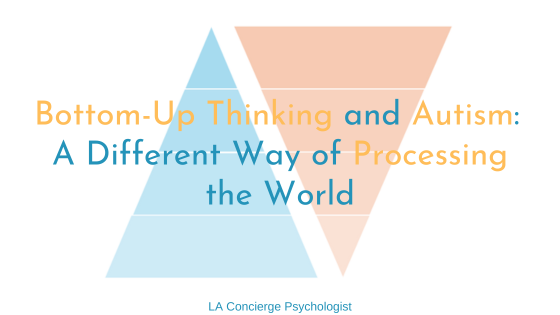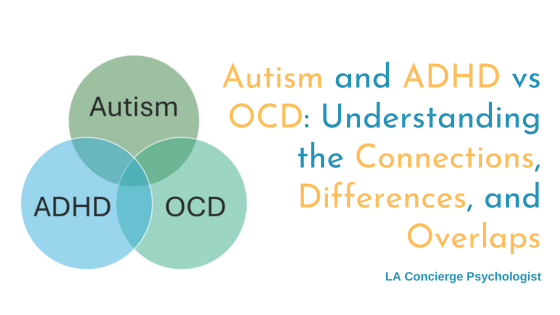Autism And Empathy: The ‘Double Empathy’ Problem
Many psychologists still view autism spectrum disorder (ASD) as a neurological defect. This view is harmful for many reasons, some of which I have detailed in my other blog posts. This week, we explore how the pathologizing of autism overlooks the reciprocal nature of communication.
Authoritarian Views Of “Correct” Communication
Majorities and other influential groups often attempt to dictate “proper” and “correct” ways of communicating. This is evident in modern American views of prescriptive grammar, which tell us how we can and cannot put sentences together and what words we may or may not use. Minority groups that deviate from these “acceptable” ways of communicating are marginalized and encouraged to conform to traditional norms.
This desire to control and standardize communication also shows up in modern attitudes toward autism. Autistic people are often blamed for miscommunications. Because autistic people don’t always react in ways their neurotypical peers expect—at least not externally—they mistakenly conclude that autistic people are cognitively or emotionally deficient.
Sadly, most psychologists today describe autism-related social difficulties in terms of an impairment-oriented ‘theory of mind.’ According to this view, autistic people have little to no ability to comprehend the thoughts and feelings of others. Some people even believe that individuals with autism have a total lack of empathy.
There Is No ‘Right’ Way To Communicate
Some ways of communicating are more common than others, but that doesn’t make them superior. If one person speaks Mandarin and another speaks Italian, they will struggle to communicate. Mandarin speakers outnumber Italian speakers by 14 to one. However, that doesn’t mean Mandarin is somehow more correct than Italian. Italian isn’t worse than Mandarin— just different.
If the person speaking Italian can’t understand the person speaking Mandarin, is it their fault? Or course not. Most people would agree that equating language differences with language deficits would be a mistake. So why are the communication differences of autistic people being viewed as deficiencies?
Autistic people are no more impaired than their neurotypical counterparts, according to Dr. Damian Milton’s theory of ‘double empathy.’ According to Milton, “Whilst it is true that autistic people can struggle to process and understand the intentions of others within social interactions, when one listens to the accounts of autistic people, one could say such problems are in both directions.”[i]
Both Autistic and Neurotypical People Can Lack Empathy
2016 research by Elizabeth Sheppard and her colleagues suggests that neurotypical people encounter significant challenges interacting with autistic individuals. In the study, 40 neurotypical subjects were shown videos of other participants reacting to various stimuli, such as being told a joke or offered a compliment. Half the people in the videos were autistic, and half were neurotypical.
The participants accurately interpreted neurotypical people’s reactions, but they consistently misinterpreted the responses of autistic people. This finding led Sheppard to hypothesize that autistic participants might simply be less expressive. So, she continued her research. In a second study, she asked subjects to rate the expressiveness of each participant.
To Sheppard’s surprise, participants perceived autistic participants just as expressive as the rest of the group. “It thus seems,” Sheppard writes, “that people with ASD react differently but not less expressively to events. Because neurotypicals are ineffective in interpreting the behaviour of those with ASD, this could contribute to the social difficulties in ASD.”[ii]
Two-sided miscommunications between neurotypical and neurodivergent people often lead to negative experiences. To avoid further problems, autistic people often avoid social interactions with neurotypical individuals (and vice versa). Autistic people’s avoidance of social situations robs them of opportunities to make friends, leading to isolation.
Double Empathy Problem Theory’s Implications For Autism Treatment
Outdated views of ASD and empathy persist in many circles. Fortunately, many psychologists are embracing the idea of autistic communication as a mutual problem. Dr. Luke Beardon’s version of the concept, which he calls his ‘cross neurological theory of mind,’ appears in his 2017 book Autism and Asperger Syndrome in Adults.
Psychologist David Jackson-Perry eloquently summarizes Beardon’s message: “If the premise of ‘different not less’ is paid more than just lip-service, it has to be accepted that the PNT [predominant neurotype] is impaired in autistic social skills. Impairment becomes a redundant concept, or at least applicable to all groups, dependent on context.”[iii]
According to Beardon, neurotypical people are equally impaired and equally to blame for communication issues. The underlying implication is that no one is at fault, nor is either party “wrong.” Their ways of communicating are merely different.
Many autistic people experience a self-fulfilling prophecy where they anticipate that they will “mess up” a social encounter. Any subsequent miscommunications that occur seem to prove them correct. As a result, they develop low self-esteem and are less likely to engage with others. When they recognize communication gaps as a mutual problem, they are less likely to blame themselves for problems.
People who share a problem share the responsibility for solving it. That means the impetus is not solely on the autistic person to remedy communication gaps. Autism therapy informed by double empathy problem theory can, therefore, focus beyond the changing the autistic individual’s behavior. It includes also educating the people who frequently encounter them. By teaching neurotypical individuals to more accurately interpret the behavior of autistic people—and imparting general communication skills—outcomes can be improved.
According to the double empathy problem theory, addressing communication issues is not about fixing autistic people. It is about empowering them. Our psychologists follow this model at LA Concierge Psychologist. If you are autistic, autism treatment can help you communicate more effectively without changing who you are. Visit our contact page to request more information or book a free 20 minute consultation call with Dr. Barajas or Dr. Goldman.



